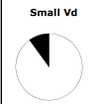Pharmacokinetics Flashcards
Pharmacokinetics involves
- Absorption
- Distribution
- Elimination (excretion, metabolism)
- Steady-state concepts
Define Pharmacology
Study of drugs; interaction between the body/drug
Pharmacological effects of Drug concentrations
- Therapeutic (positive)
- Toxic (Negative)
Pharmacodynamics relationship with body/drug
Is what the drug does to the body
Pharmacokinetics relationship with body/drug
Is what the body does to the drug
Pharmacokinetics is
The relationship between dosage regimen and drug concentrations
Pharmacodynamics is
The relationship between drug concentrations and their pharmacological effects
Pharmacokinetic relationship with a Drug A, vs adding another drug

Pharmacodynamic relationship of drug concentration and pharmacological effects
Middle square is Toxicity

How pharmacodynamics and pharmacokinetics are related

Pharmacokinetic interaction: Changes in outcome are the result of changes in the relationship between the _______ and the _____________
- DOSE
- Concentration
Pharmacokinetic interaction: The pharmacologic effect has changed as a result in a change in the _________________________.
Change in drug concentration
Pharmacodynamic interaction: Changes in outcome are the result of changes in the relationship between the _______________ and the _________.
- Drug concentration
- Effect
Pharmacodynamic interaction: The pharmacologic effect has changed despite a lack of change in the __________________________.
Drug concentration
Functions of Cell membrane
- Barrier to drugs
- Divides the body into compartments
- More lipid-soluble substances move more freely across membranes
- less lipid soluble substances pass less freely across membranes
Examples of less lipid-soluble substances (cell membrane)
- polar substances
- relatively lipid-insoluble
- ionized substances
What is absorption bioavailibily
- Measure of the amount of drug that is BIO AVAILABLE
(i. e. available to exert a systemic effect on the body) - Measure of systemic drug exposure
(i. e. how much a drug is absorbed)
What is Absolute bioavailability
How much drug is absorbed
Relative and absolute bioavailabilty combined
How two dose forms compare in terms of systemic drug exposure
What kinetic parameter quantifies drug exposure?
- The AUC produced by the serum concentration-vs-time profile
- Expressed % of product which reaches the systemic circulation
How does this chart explain bioavailability?

-Bigger the area under the curve the more bioavailability (drug in systemic circulation)
Bioavailability depends on the:
- absorption characteristics of the drug and dose form
- metabolism occuring prior to the drug reaching the systemic circulation
(i. e. first pass effect) - presence of interacting substances
(i. e. drugs, food/no food/type of food)
Why you calculate absolute bioavailability
- Know how much drug is absorbed/reaches systemic circulation
- How the two dose forms compare in terms of systemic drug exposure
Purpose of relative bioavailability
To calculate/approximate the bioavailability relating to drugs
i.e. Tablet relative to solution
or
Solution relative to tablet




















